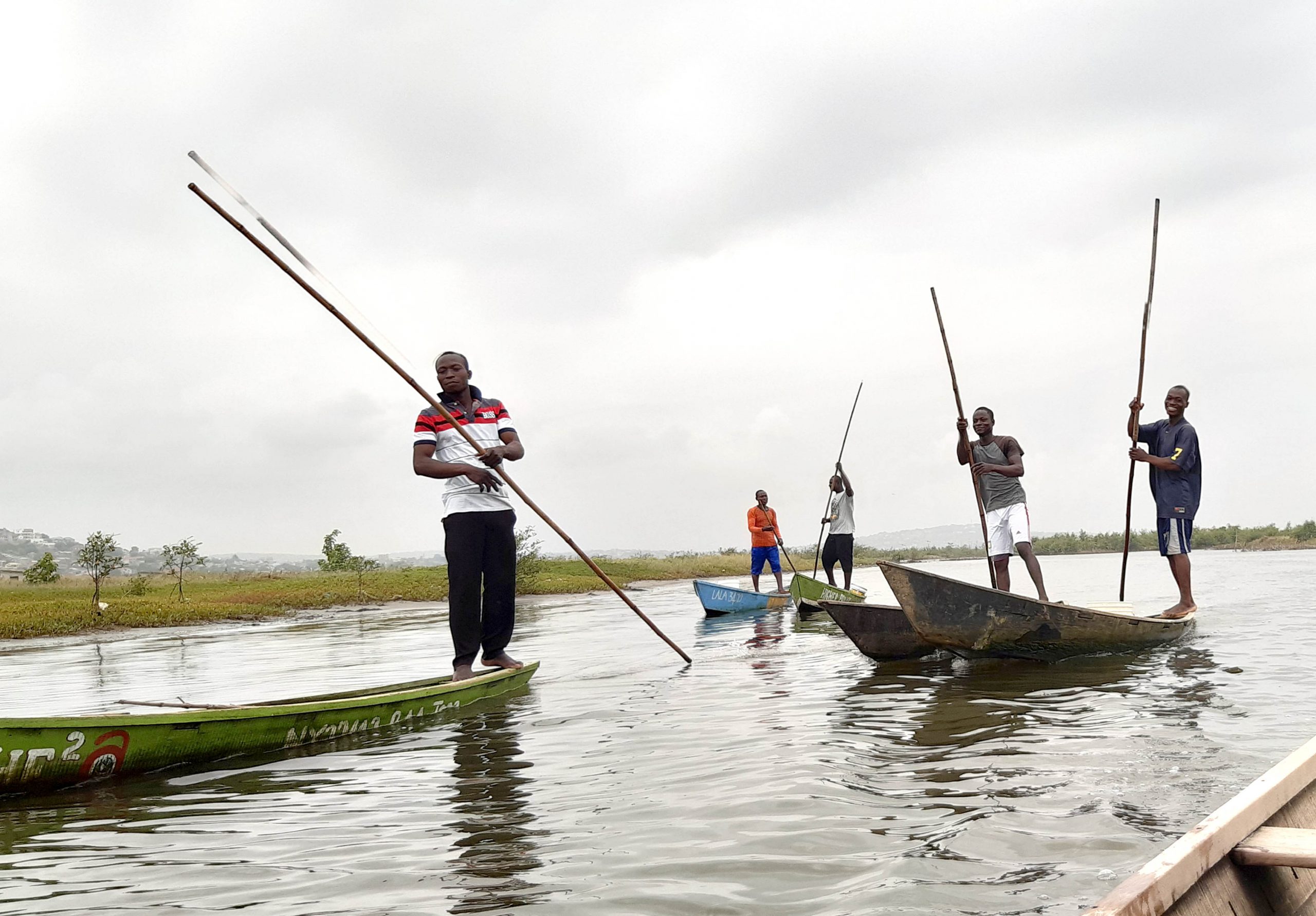Community-Based Climate Adaptation Project Shows Promising Results
Early results from the Lake Victoria Basin climate adaptation project demonstrate the effectiveness of community-led approaches to building climate resilience.
Read MoreOcean advocacy on wheels. Our innovative learning bringing ocean knowledge to primary school students who live outside ocean communities.

Dedicated to the sustainable management and conservation of blue resources through research, policy advocacy, and community engagement.
Our mission is to ensure responsible stewardship of inland, coastal and marine resources through participatory evaluation of policies, legislations and plans, research, advocacy, and strong cross-sectoral partnerships.
Promoting practices that ensure long-term viability of blue resources
Working with local communities to develop sustainable solutions

To be a leading institution that transforms research into impactful solutions, empowering individuals and organizations to create positive change.
Pioneering new approaches to research and education
Creating meaningful change in communities
Making a difference in blue resource management
Discover our range of actions designed to address today's challenges and prepare for tomorrow's opportunities.

A digital platform providing access to resources, tools, and virtual experiences for marine and coastal research and education.
Ocean advocacy on wheels. Our innovative learning bringing ocean knowledge to primary school students who live outside ocean communities.
A digital platform providing access to resources, tools, and virtual experiences for marine and coastal research and education.
Engaging conversations with experts and thought leaders on marine conservation, coastal management, and sustainable development.
Learn moreA photography competition raising awareness about marine litter and promoting creative solutions for cleaner oceans and coastlines.
Learn moreCommunity-driven initiatives to clean and preserve our beautiful beaches and coastal areas for future generations.
Learn moreStay informed about our latest research, initiatives, and impact stories

In commemoration of the World Mangrove Day 2025, BlueRRPI will hold our next episode of BlueChats series on mangrove conservation in Ghana
Read Full StoryEarly results from the Lake Victoria Basin climate adaptation project demonstrate the effectiveness of community-led approaches to building climate resilience.
Read MoreThe World Health Organization has awarded a major grant to strengthen primary healthcare systems in rural Uganda, focusing on community health worker programs and digital health interventions.
Read MoreSupporting innovative research and projects through strategic funding opportunities.
Supporting innovative research on health system strengthening, policy development, and healthcare delivery improvements...
Funding for research on innovative education policies, teaching methods, and educational technology integration.
Annual award for outstanding research on governance, public administration, and accountability mechanisms.
Funding for research on innovative education policies, teaching methods, and educational technology integration.
Supporting innovative research on health system strengthening, policy development, and healthcare delivery improvements in Uganda.
Fellowship program for early-career researchers studying climate change adaptation and environmental policy.
Supporting research on economic development strategies, trade policy, and private sector development.
Multi-year initiative supporting research on gender equality, women's empowerment, and social inclusion.
Supporting scientific research and policy development
Empowering local communities through participatory projects
Funding for training and educational programs
Supporting evidence-based policy research
Open calls for proposals throughout the year with clear guidelines and requirements
Transparent review and selection criteria by our expert panel
Ongoing mentorship and resources for grantees throughout the project
Opportunities to connect with partner organizations and other grantees
Exploring innovative solutions to complex challenges through interdisciplinary research.
Research on environmental governance, climate adaptation strategies, and sustainable development policies.
Research on technology adoption, innovation systems, and digital transformation policies.
Learn MoreResearch on agricultural policies, food systems, and rural development strategies.
Learn MoreResearch on gender equality, social inclusion, and marginalized group empowerment.
Learn MoreResearch on governance systems, public sector reforms, and institutional development.
Learn MoreAnalysis of economic policies, trade relationships, and development strategies for sustainable growth.
Learn MoreResearch on environmental governance, climate adaptation strategies, and sustainable development policies.
Learn MoreExplore our latest research findings and publications on blue resource management.
Peter Wanyama, Grace Tumusiime, Robert Ssekitoleko, John Okello
Authors
Sarah Nakamya, Florence Miremb...
Health Policy and Planning
Florence Mirembe, Sarah Nakamy...
BMC Health Services Research
David Kyaddondo, Agnes Nabuken...
Publication
Concise analyses and recommendations to inform policy decisions for sustainable blue resource management.
Sarah Nakamya, James Okello, Grace Namukasa
Policy Expert
Have questions or interested in collaborating? Get in touch with us.
123 Research Avenue
Academic City, ST 12345
Ghana
Monday - Friday: 9:00 AM - 5:00 PM